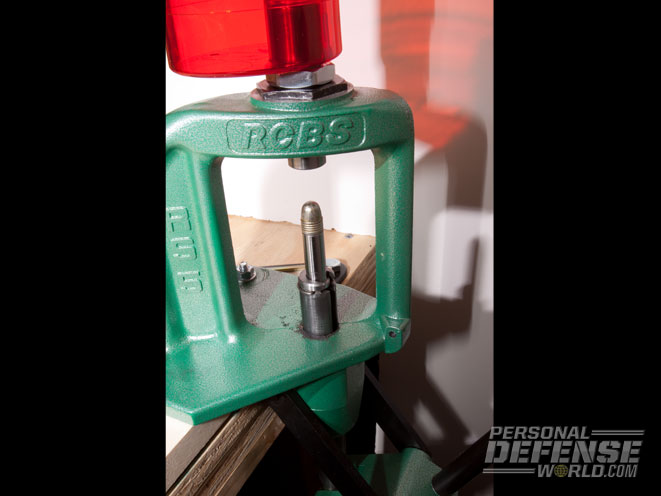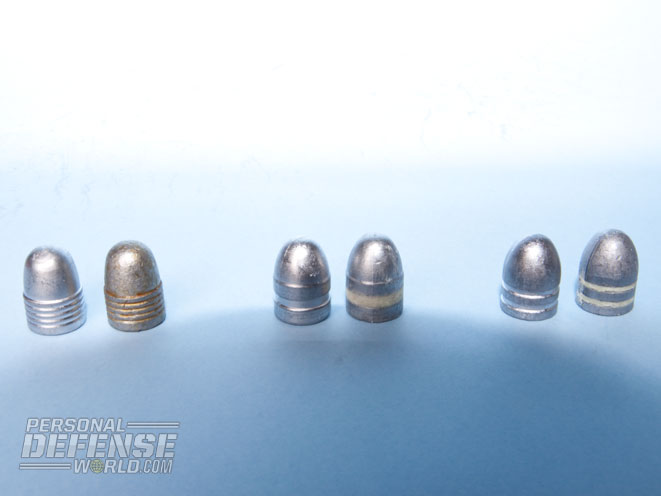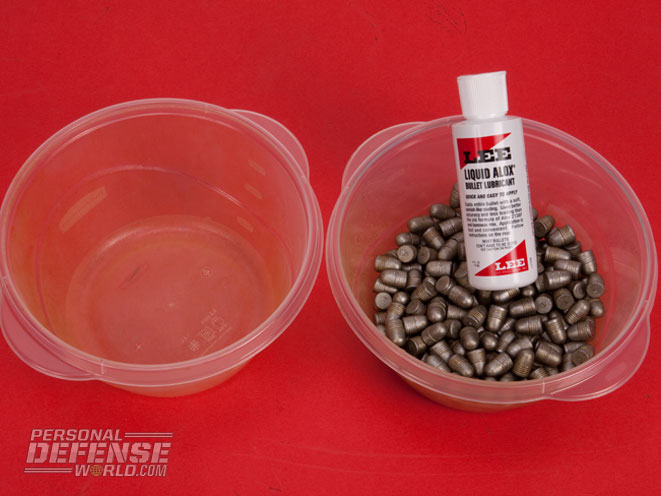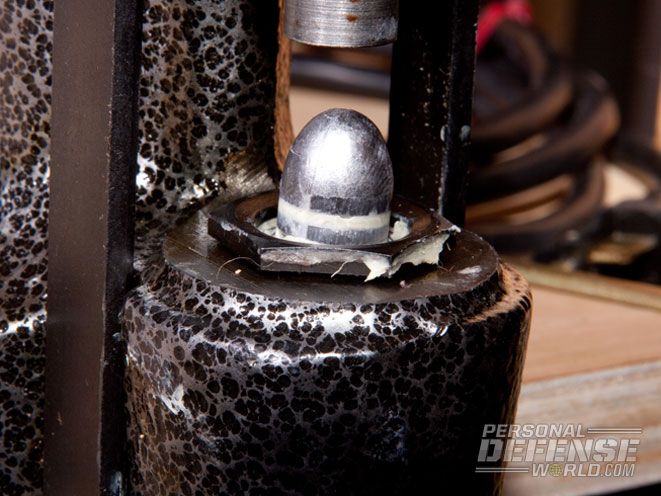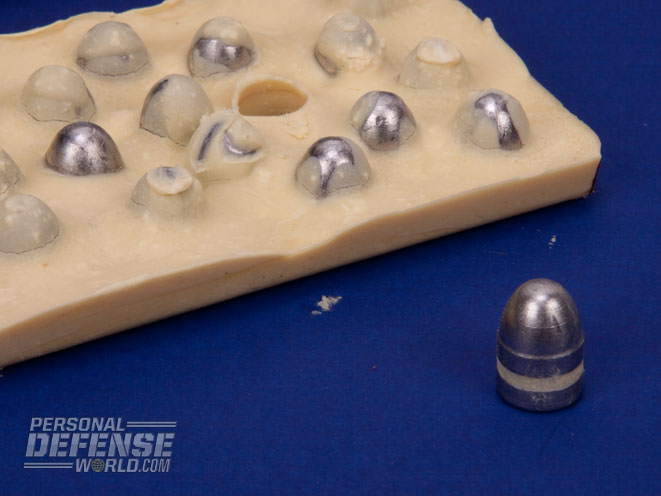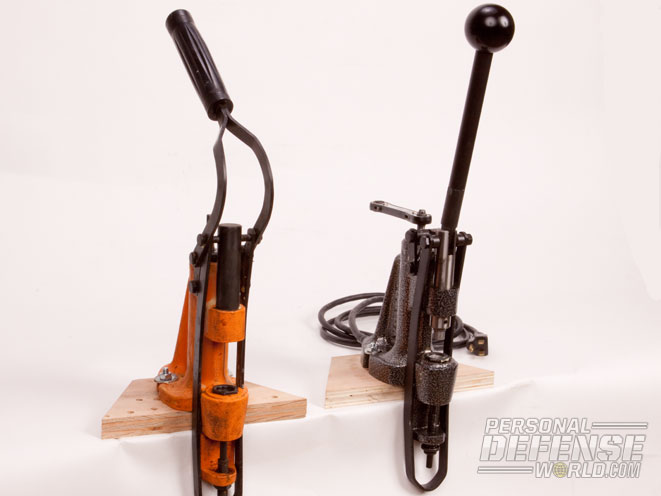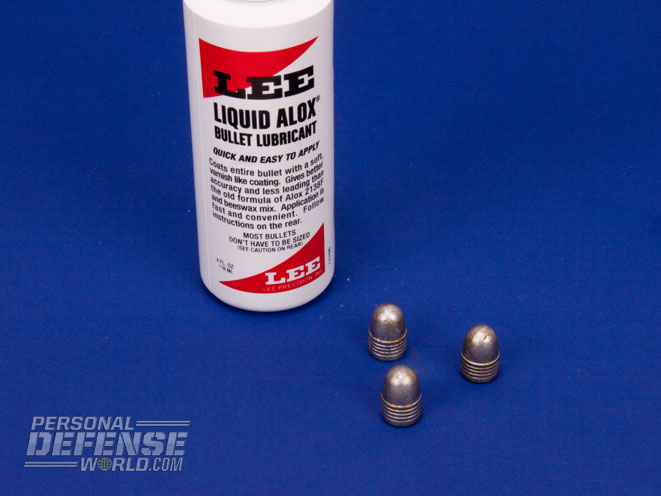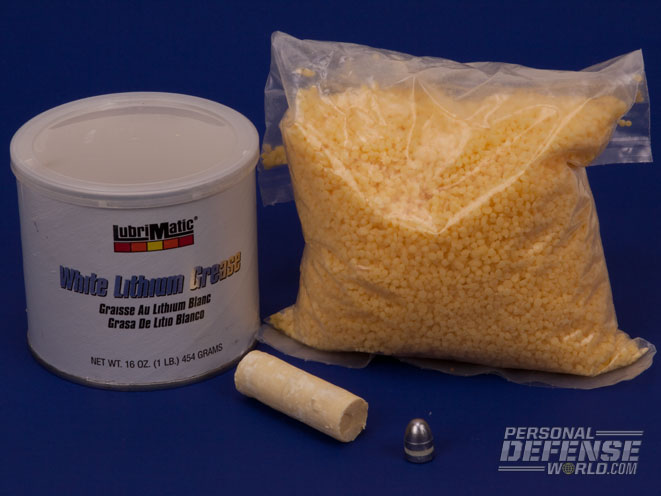If you don’t lubricate bare bullets, they will lead your bore and accuracy will disappear. This can happen with amazing quickness, and it can be a real bear to clean out a badly leaded barrel. So lubrication is mandatory, but sizing isn’t as clear-cut. Many of today’s molds throw cast bullets that are right on for their stated diameter.
Quite often you can get away without sizing revolver bullets at all. If the rounds will chamber, they will be okay. Unfortunately, you can’t count on that being the case when you order a mold. I’ve had nominal 0.429-inch molds that threw 0.432-inch bullets. Meanwhile, I wouldn’t even try to get by without sizing autopistol bullets. With a revolver, a slightly oversized slug can sometimes be seated with a bit more thumb pressure. And, when you’re carrying a revolver, you know that the rounds in the cylinder are good to go—they’ve already passed the chamber-ability test when you loaded the gun.
Not so with an autoloader. You don’t know if a cartridge in the chamber will feed until it actually does. You want your bullets sized to factory specs to be sure they’ll chamber properly when the time comes. That’s where bullet sizing comes in.
Advertisement — Continue Reading Below
Reloading Tools

When it comes to lubing and sizing bullets, you have some options. As with most things in life, the cost of those options goes up in direct proportion to how much of your time and effort you’re willing to expend versus how much convenience you prefer. At the high end of the cost curve are sophisticated lubing and sizing tools from companies like Lyman and Star. Machines like these cost close to $200. They lube and size in one fast operation and are configurable for bullets of almost any size. With a few minutes’ work these tools can quickly be changed to size different-diameter bullets, making them very flexible. The more you shoot, and the more different bullets you shoot, the more cost effective lube/sizers are.
RELATED: Easier, Faster, Smarter Revolver Reloads
Advertisement — Continue Reading Below
At the low end of the cost curve is the Lee Precision Lube and Sizing Kit. With some careful shopping you can find these kits for around $15. The sizing portion of the kit is made up of a sizing die that swages the bullet down to the specified diameter, a ram to push the bullet through the sizing die, and a plastic case to catch the sized bullets. The lubing portion of the kit is a bottle of Lee’s liquid Alox lube.
This kit is cheap, simple, and it really works. Lee recommends that you use it with bullets cast from the company’s “Tumble Lube” molds. These bullets have a series of small lube grooves rather than the one or two lube grooves on conventional bullets. These micro-bands hold the Alox better. But you can use the system with conventional bullets, and you can even use it with conventional lubes, rather than the liquid Alox.
Proper Lube
Advertisement — Continue Reading Below

Using the kit is pretty straightforward. You’ll need a couple of Tupperware bowls. Pour a hundred or so bullets into a bowl and squirt in some liquid Alox. A little goes a long way. Then just pour the bullets from one bowl to the other until they are all coated with a thin film of Alox. At that point I’ll add another 100 bullets to the mix, and toss those awhile before adding a final hundred. I’ve found that three hundred 230-grain slugs equals about 10 pounds of lead, and that is as much as I can comfortably toss from bowl to bowl. They don’t call it “liquid” Alox for nothing. When you’re through tossing them, the bullets will be wet to the touch. They have to be spread out on foil or waxed paper to dry overnight before you can size them.
RELATED: Redding Micro-Adjusting Taper Crimp Dies for .223 Rem and .308 Win
The Lee sizing die screws into your press just like a reloading die, and the ram goes in the shell holder slot in the presses ram. Once your bullets are dry you size them by putting them on the ram and pushing them nose-first through the sizing die. Bullets have to be lubed first with this system, otherwise they won’t swag cleanly and they can stick in the die.
Advertisement — Continue Reading Below

If you already own conventional bullet molds, or, if you just don’t like micro-band-style bullets, you can use liquid Alox on bullets with conventional lube grooves, too. Or, you can forgo the Alox entirely and use a solid lube with your conventional slugs. I like this approach because I make my own lube at a considerable savings over commercial lubes.
You can find any number of lube recipes in books or on the internet. My personal lube recipe calls for 1 pound of beeswax and 1 pound of white lithium grease. I melt the beeswax in the microwave and stir in the lithium grease, reheating as needed, to get it all melted and blended in. This makes 2 pounds of bullet lube at a cost of about $0.50 per ounce. Commercial lubes cost anywhere from $1.25 per ounce to $4 per ounce. Those 2 pounds of lube will work for many thousands of bullets.
To use the Lee bullet sizer with conventional bullets and lubes you’ll need to pan lube the bullets. Get an old baking pan, preferably one you will never use again for food preparation, and stand your bullets up in it. Then melt your lube in the microwave and pour the molten lube into the pan until the lube level is just a bit higher than the lube grooves on the bullets. After the lube cools into a solid block you can push the bullets out base first. You’ll see that the lube grooves are now filled with bullet lube. If you see any gaps, just rub it with a piece of lube to fill it in. After pan lubing, you can run your bullets through the Lee sizer just like you did with the Alox-coated bullets.
Advertisement — Continue Reading Below
Two In One

The final lubing and sizing technique is to use a mechanical lube/sizer like the Lyman 4500 Lube Sizer. These units can cost close to $200 new, and, if you do a lot of reloading with cast bullets, you’ll definitely think they’re worth it. But, with a little creative shopping you could do even better. I have two Lube Sizers. One is the older 450 model that I use for blackpowder lube and I have the current 4500 model for smokeless lubes. I got the 450 about 10 years ago by posting “want to buy” notices on a lot of shooting-related websites. After I waded through all the responses, I ended up buying the used 450 for $15. Even 10 years ago, that was a spectacular deal.
RELATED: Whidden GunWorks Case Gauge
Advertisement — Continue Reading Below
Lube/sizers are great if you cast for a number of calibers. They take interchangeable sizing dies and top punches that allow you to set them up for any bullet you need. The operation is simple and fast. You put a bullet into the sizer die and pull the handle down. The top punch guides your bullet down into the sizing die which swages the slug down to size and also fills the lube grooves with lubricant. The Lyman 4500 comes with a built-in heating element, which is absolutely required to get most hard lubes to flow. My beeswax/lithium lube is soft enough to flow without heat.
You can lube a lot of bullets quickly with this system. Every two or three bullets you’ll need to take about an eighth of a turn on the lube reservoir crank to keep the lube flowing into the sizing die. And that’s all you need to know. The process isn’t that hard to figure out.
Pairing what you’ve learned here with some basic understanding of casting, you can say goodbye to expensive factory ammo and shoot as much as you like.
Advertisement — Continue Reading Below
For More Information
Lee Precision, Inc.
http://www.leeprecision.com; 262-673-3075
Advertisement — Continue Reading Below
Lyman
http://www.lymanproducts.com; 800-632-1699
